Southern Lights | Aurora Australis Guide
The Southern Lights (Aurora Australis) is one of nature’s most incredible scenes. Lighting up the southern skies in dramatic formations, the Aurora Australis dances across the southern hemisphere’s auroral oval. Until recently, witnessing the Southern Lights up close has largely been inaccessible to most people.
Many Australians spend a small fortune flying to Norway, Canada, and the Arctic Circle to witness the Northern Lights. Although the Southern Lights are equally impressive, the Northern Lights occur closer to land and have generally been more accessible to tourists. However, Australians now have the opportunity to fly above the weather and light pollution, directly into the southern auroral zone, and experience the Southern Lights up close and personal on dedicated scenic flights.
What is an Aurora?
An aurora, named in honour of the Roman goddess of dawn, is a light display that occurs naturally in the earth’s sky around the magnetic north and south poles. Auroras produce ethereal and dynamic exhibitions of colour such as green, red, blue, and yellow which change shape across the night sky like slowly billowing curtains. They are most visible in high latitude areas.
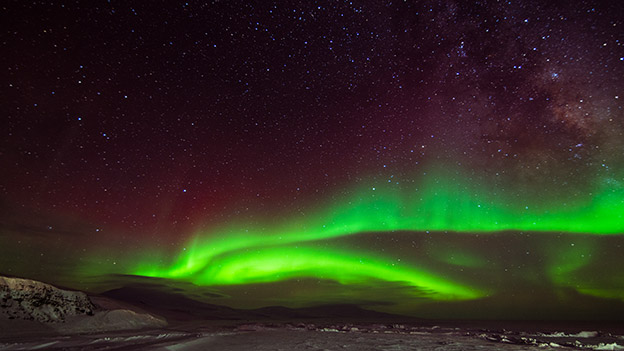
Often referred to as the Northern Lights in the Northern Hemisphere and the Southern Lights in the Southern Hemisphere (collectively as the polar lights), an aurora is an electrical phenomenon and one of the seven natural wonders of the world.
An aurora begins its journey at the centre of our solar system. The Sun produces a solar wind, made up of electrically charged particles flowing outward into the solar system. As these particles reach the Earth’s magnetic field, the solar wind is forced around the planet and travels further through the solar system. Along the way, some of these particles become trapped in areas around the Earth’s geomagnetic poles – known as the auroral zones.
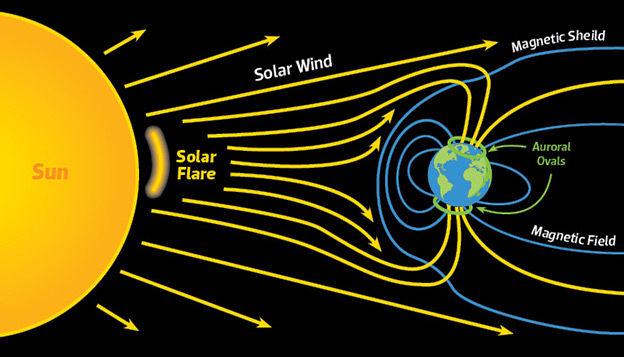
When we gaze upon the dancing lights of an aurora, we are witnessing billions of individual collisions lighting up the magnetic lines of our planet.
The ethereal lights of an aurora occur when the trapped particles from the solar wind collide with atoms and molecules in the Earth’s atmosphere. The collisions produce energy which is released as a burst of light. When we gaze upon the dancing lights of an aurora, we are witnessing billions of individual collisions lighting up the magnetic lines of our planet. Pretty damn impressive!
Where and When Auroras Occur
If you want to see an aurora, the closer you are to the auroral zone (auroral ovals), the better. The auroral zones are centred around the earth’s north and south magnetic poles – at a latitude approximately 60 -70 degrees north or south of the equator near the Arctic and Antarctic Circles. No matter how active the sun is, the aurora is always glowing within the auroral ovals. In principle, if you can get within the auroral zones, you will witness an aurora of some type.
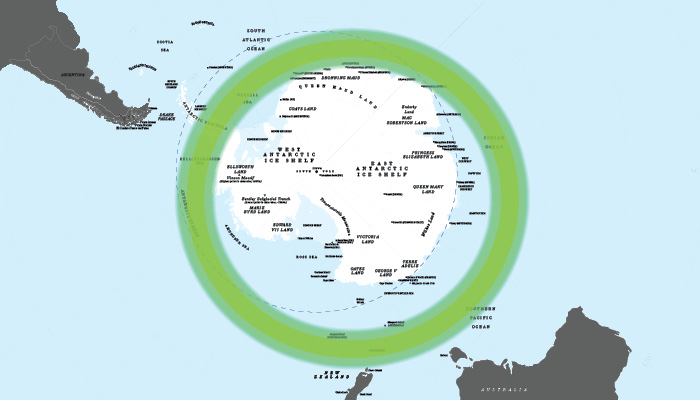
The most active auroras occur when there is an increase in solar wind activity. An increase in activity can lead to auroras being visible at lower latitudes. Although solar weather can change daily, an increase in solar wind activity occurs around the spring and autumn equinoxes. In Australia, it is common for people to photograph auroras from Tasmania around the time of an equinox. The more active auroras have even been photographed as far north as Southern Queensland. Imagine what these aurorae would look like if you could get a little closer to the action.
The Northern Lights are arguably more famous than the Southern Lights because the Northern Hemisphere’s auroral zone is much closer to land, and traditionally more accessible. People have been witnessing the Northern Lights in Alaska, Canada, Iceland, Greenland, Norway, Sweden and Finland for centuries. But just because the Northern Lights are more famous, it doesn’t mean the Southern Lights aren’t equally impressive.
What do Auroras Look Like?
Every aurora is different – which is what makes this such an exciting topic to discover. Earlier, we mentioned that an aurora is essentially billions of collisions lighting up our planet’s magnetic lines. Since no two collisions are the same, let alone billions, it can get a little tricky to predict what one will see. However, we can gain a general understanding of what to expect.
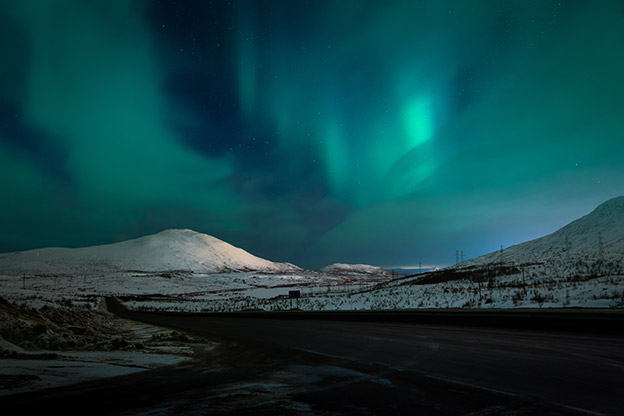
A Beautifully Paced Phenomenon
If you have ever watched a video of an aurora, you may expect the lights to be dancing around in fast-moving ‘waves’ of colours. Online videos of auroras are often presented as a time-lapse (a compressed, sped-up version of a much longer sequence) and are not a great indication of the speed at which an aurora moves.
The truth is auroras generally present as a beautifully paced, slow-moving natural phenomenon. The waves will often glide across the sky rather than moving back and forth quickly like they do in a time-lapse video.
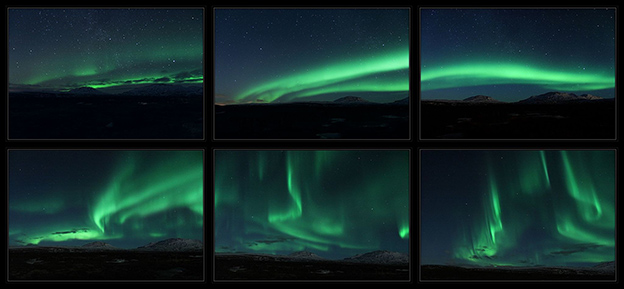
The Colours of an Aurora
Green is the most common colour we can see in an aurora. The green in an aurora is caused by ions colliding with oxygen at lower altitudes.
Reds are the result of collisions occurring at much higher altitudes. Reds are less common than green.
Collisions with nitrogen cause blue, purple, and reddish lights – often visible on an aurora’s lower fringes.
Hydrogen and helium can also produce blue and purple auroras. However, our eyes are largely incapable of picking these up.
A camera is an invaluable tool to experience the full range of colours on display within an aurora.


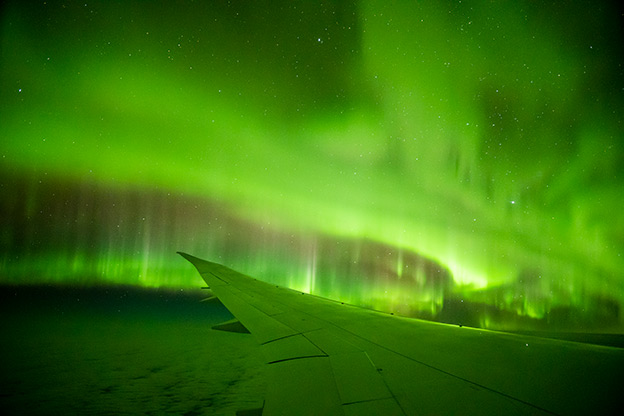

The above photos depict the rapid change in colours present in Auroras over 24 hours. The first two images were taken on a dedicated scenic flight to witness the Aurora Australis in March 2021. On this flight, passengers captured a vivid display of reds, blues, and purples within the aurora. The second two images were taken on a scenic flight to the same area (the auroral zone in the Southern Ocean) 24 hours later. Note the increased presence of green on display, and the reduction of reds, blues, and purples present.
The Human Eye vs the Camera
The views you get of an aurora through a camera are significantly stronger than what you can see with the naked eye. A modern, sophisticated camera is far more sensitive than the human eye and better at capturing the complexities of colours on display within an aurora.
If you look at photos of auroras, you can often see reds, blues, and greens on display. Our eyes tend to pick up greens and reds quite well, and people may also be able to see shades of purple in particularly active auroras with their eyes. However, a decent camera can capture an aurora better than your eye ever will and provide a more accurate representation of the colours on display. The colours picked up by the camera are not a technological fabrication. They are real. Our eyes just haven’t evolved to perceive them. It is strongly recommended you take along a decent camera if you are planning to witness an aurora.
It is crucial to allow your eyes to adjust to the darkness fully if you wish to see the full range of colours your eyes are capable of perceiving.
Different people see auroras differently. While some people can see an aurora’s greens quite well, the green appears as a milky white to the naked eye for others. Blues also appear washed out and milky white to many people. It is crucial to allow your eyes to adjust to the darkness fully if you wish to see the full range of colours your eyes are capable of perceiving. It takes approximately 20 minutes for the human eye to adapt to the dark. Even a short glimpse of light can reset our eyes.
Colour blindness or age is not considered the cause of this disparity between different people’s aurora experiences, but rather our capacity to see faint colours at night. For some of us, we are essentially reduced to black and white vision at night. Another reason to pack that camera!
These 3 images demonstrate the differences people may experience looking at auroras:

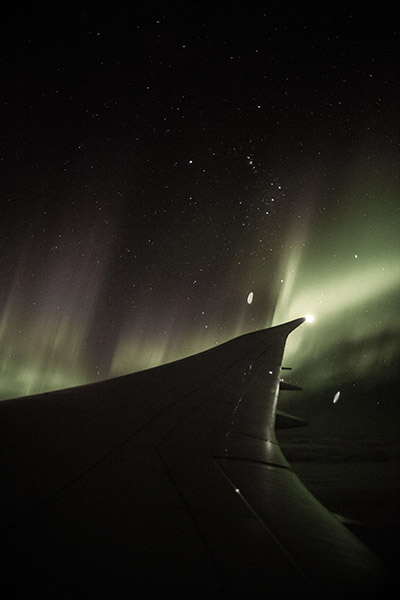

Photos: Viva Expeditions
- Image 1 – an aurora as viewed by someone who is unable to pick up the colours at night.
- Image 2 – what the scene might look like to someone who can detect some colours.
- Image 3 – the same scene as picked up by a digital camera.
Experienced auroral observers suggest considering your priorities before heading out to witness an aurora. Is your primary goal to experience the phenomenon with the naked eye, or are you trying to capture an image of the aurora with your camera? The bright lights of your camera’s LCD screen will affect your eye’s ability to adjust to the darkness. If photography is your goal, ensure you’re familiar with your camera equipment and turn down (or even turn off) the camera’s LCD screen.
A Final Piece of Advice
Don’t buy a camera the day before heading out on an aurora trip. You must be familiar with your camera equipment before heading out to capture images of auroras. Regularly taking photos of night time skies is a great way to improve your photography skills and set you up for success.
Southern Lights by Flight
You can now witness the Southern Lights (Aurora Australis) up close and personal via a dedicated Southern Lights scenic flight departing from multiple Australian capital cities.
Join Chimu Adventures and a team of expert astronomers on board a private Qantas Boeing 787-9 Dreamliner as you head over the Southern Ocean toward Antarctica.
What Makes These Flights Special
The Aurora Australis shines brightest in one of the world’s most remote regions – the Antarctic Circle. Although aurora hunters have been photographing this phenomenon from Australia and New Zealand’s southern areas for years, they have been at a disadvantage, capturing the more active auroras from quite some distance. What if we could get closer?
Southern Lights by Flight will take you far away from light pollution, high above the clouds and weather systems, directly into the auroral zone to see a magical and unforgettable display – an uninterrupted view of the Aurora Australis.
The plane can fly cross-sections across the aurora to increase viewing time, and by witnessing the aurora at a higher altitude, not only are you above the weather, but you’re also closer to the action (the lowest auroras happen approx. 50 km above the earth’s surface).
Southern Lights flights provide a more prolonged and more intense experience to traditional ground-level tours, such as those popular in the northern hemisphere. Although viewing an aurora of any kind is an incredible experience, there are limitations to witnessing these phenomena from land. At ground level, the aurora moves back and forth in front of you, and you are at the mercy of the weather and light pollution. Not much fun if it’s a cloudy night!
The southern auroral zone has significantly less commercial flight traffic than the northern hemisphere, making it the ideal location to run a dedicated aurora flight. Less air traffic means a greater ability to change flight paths on the night in response to auroral activity and reduce potential light pollution. Considering the air traffic in the Arctic Circle, it’s hard to see similar flights offered in the northern hemisphere any time soon.
Australia is uniquely located to take advantage of the southern hemisphere’s gifts. The magnetic south pole currently sits closer to Australian shores than any other country, meaning lucky passengers will be in the auroral zone for longer. Along the way, you will also see constellations, stars, and planets as you have never witnessed them before – all under the guidance of a team of expert astronomers and photographers.
Please note, Chimu is not currently offering scenic flights to the Aurora Australis, but if we bring them back in the future, we'll update our website and social media with more details!
Where Will You Go Next ?
- Popular Destinations
- Antarctica
- The Arctic
- South America
- Central America
- More to explore
- Amazon
- Antarctic Circle
- Antarctic Peninsula
- Argentina
- Bolivia
- Brazil
- Canadian Arctic
- Chile
- Colombia
- Costa Rica & Panama
- East Antarctica
- Ecuador
- Galapagos Islands
- Greenland
- Guatemala & Honduras
- Machu Picchu
- Mexico
- Patagonia
- Peru
- South Georgia and Falkland Islands
- Spitsbergen
- Sub Antarctic Islands

Talk to one of our experienced Destination Specialists to turn your Antarctic, Arctic and South American dream into a reality.
Contact us
